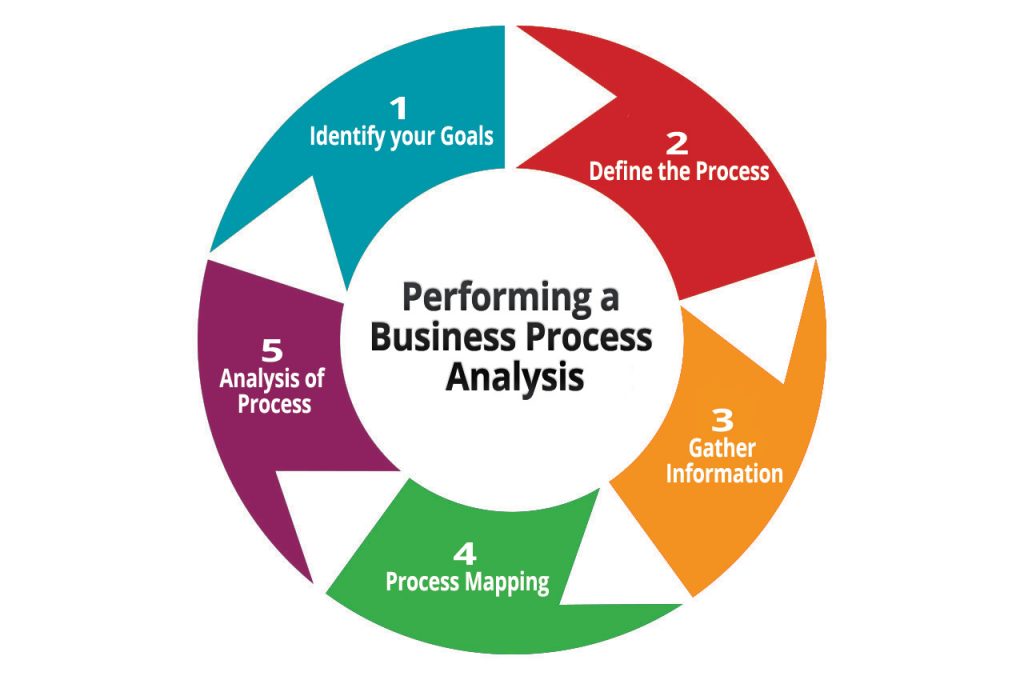Business Process Analysis
Overview: ITegrators offers comprehensive business process analysis services to help you optimize your operations and drive efficiency. Our expert analysts work closely with you to understand your current processes, identify areas for improvement, and implement effective solutions.
Key Features:
- Process Mapping: Detailed mapping of your current business processes to identify inefficiencies.
- Gap Analysis: Identifying gaps and areas for improvement in your existing processes.
- Optimization Strategies: Developing and implementing strategies to optimize your business processes.
- Continuous Improvement: Ongoing analysis and improvement to ensure sustained efficiency.
Benefits:
- Improved operational efficiency
- Reduced costs
- Enhanced productivity
- Streamlined business processes
Why Choose ITegrators? Our expertise in business process analysis ensures that your operations are optimized for maximum efficiency and productivity.
What is Business Process Analysis?
Business process analysis, called BPA, is a systematic approach to examining and evaluating an organization’s business processes. It involves identifying, documenting, and analyzing the current processes to identify bottlenecks, inefficiencies, and areas for improvement.

Critical aspects of Business Process Analysis include:
Initiation
In this initial phase, the need for process analysis is identified. This could stem from process inefficiencies, customer complaints, changing business goals, or other factors. The scope and objectives of the analysis are defined, along with the selection of processes to be analyzed.
Planning
A detailed plan is developed to guide the analysis process. This plan includes defining the methodology, tools, resources, timeline, and responsibilities for each stage of the BPA lifecycle.
Data Collection
Relevant data is gathered about the selected process. This can include process documentation, performance metrics, historical data, and stakeholder feedback.
Process Mapping
The current process is mapped out visually using flowcharts, process maps, or other diagramming techniques. This helps understand the sequence of activities, decision points, and interactions.
Data Analysis
Collected data is analyzed to identify patterns, trends, bottlenecks, and inefficiencies. This step often involves applying techniques such as root cause analysis, Pareto analysis, and statistical analysis.
Identifying Improvement Opportunities
Based on the analysis, areas for improvement are identified. These could include specific tasks, interactions, or elements of the process that need modification or automation to enhance efficiency and effectiveness.
Solution Generation
Potential solutions to address the identified issues are brainstormed. Cross-functional teams collaborate to develop creative and feasible solutions that align with the organization’s goals.
Future State Design
The chosen solutions are incorporated into a redesigned “future state” process. This new process is designed to mitigate the identified issues and capitalize on the improvement opportunities.
Implementation Planning
A detailed plan is created for implementing the changes to the process. This plan outlines the steps, resources, timeline, and responsibilities required to execute the process improvements.
Testing and Validation
Before full-scale implementation, the proposed changes are tested on a smaller scale or in a controlled environment. This helps identify any potential issues and refine the process further.
Implementation
The approved changes are rolled out across the organization. Stakeholders are informed, trained, and provided with the necessary resources to adapt to the new process.
Monitoring and Evaluation
The implemented changes are closely monitored using KPIs. The performance of the new process is compared to the baseline data to assess the improvements achieved.
Feedback Collection
Employees, stakeholders, and customers receive feedback from the process. This feedback is valuable for making ongoing adjustments and refinements.
Continuous Improvement
The BPA lifecycle is a continuous process. The process is continually monitored, analyzed, and refined based on feedback, new data, and changing business requirements to ensure ongoing optimization.
Documentation and Communication
Throughout the BPA lifecycle, documentation is maintained to capture the analysis process, findings, changes made, and their impact. This documentation aids in knowledge sharing and future reference.